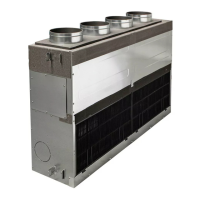




Do you have a question about the Toshiba RAV-SM802BT-E and is the answer not in the manual?
| Cooling Capacity | 8.0 kW |
|---|---|
| Heating Capacity | 9.0 kW |
| Power Supply | 220-240V, 50Hz |
| Refrigerant | R410A |
| Weight (Indoor Unit) | 14 kg |
| Operating Temperature (Cooling) | -10 to 46°C |
| Operating Temperature (Heating) | -15 to 24°C |
| Type | Split System |
| Noise Level (Outdoor Unit) | 52 dB(A) |
| Air Flow (Indoor Unit) | 1, 200 m3/h |
Details the adoption of HFC R410A refrigerant to prevent ozone layer destruction.
Highlights risks associated with improper air conditioner installation.
Specifies the requirement for a switch with contact separation for disconnection.
Advises on safe operation practices and immediate actions for abnormalities.
Warns against self-service due to high voltage and potential electric shock.
Provides critical installation advice, including drain hose and power supply.
Offers guidelines for safe and effective air conditioner operation.
Illustrates and labels the parts of the indoor air conditioning unit.
Illustrates and labels the parts of the outdoor air conditioning unit.
Explains the various indicators and displays on the remote controller.
Details the functional buttons on the remote controller for operation.
Describes the specific function of each button on the remote controller.
Guides on powering on the unit and initial remote controller interaction.
Details essential requirements for operating the air conditioner.
Instructions on how to properly turn off the air conditioner.
Steps to initiate the automatic changeover cooling/heating operation.
Procedure for stopping the air conditioner's automatic operation.
Instructions for setting OFF, Repeat OFF, and ON timers.
How to cancel or clear an active timer setting.
Tips for maintaining an ideal room temperature for efficiency.
Importance of clean air filters for airflow and performance.
Advice on minimizing opening doors and windows to retain air.
How to use curtains for cooling and heating efficiency.
Tips for adjusting airflow direction for even room circulation.
Instructions and cautions for cleaning the remote controller.
Steps for preparing the unit if not used for over one month.
Essential checks to perform before operating the air conditioner.
Explains the built-in delay to protect the compressor upon restart.
Procedure for restarting the unit after a power interruption.
Details preheating, warm air control, and defrosting operations.
Advises on preventing snow or ice buildup on the outdoor unit.
Specifies the recommended temperature and humidity ranges for operation.
Lists places where the air conditioner should not be installed.
Advice on minimizing noise and vibration during installation.
Important cautions before contacting service for issues.
Checks for common issues like power or circuit breaker problems.
Troubleshooting tips for poor cooling or heating performance.
Explanations for strange noises and room odors.
Information on defrosting operation and water drainage.
Reasons for changes in air flow during heating or cooling.
Explanation for the appearance of white mist.
Troubleshooting fan speed setting issues related to mode selection.












